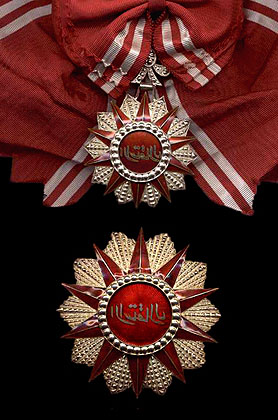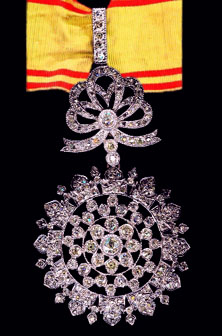
Tunisia
H.R.H. Prince Mustafa
Bey Gouta
Grand Master of
Order of the Blood - Established: 1839 by Ahmad Pasha-Bey, and reorganised by Muhammad as-Sadiq Pasha-Bey on 26th April 1860. Awarded in one class only to princes of the blood and princes from foreign royal houses, and very rarely to senior Tunisian and foreign statesmen. Obsolete 1957.

Order of the Fundamental Pact - Established: 16 January 1859 by Sidi Mohammed al-Sadiq Pasha-Bey, to members of the ruling house, senior public servants and to senior officers for acts of bravery. Muhammad as-Sadiq Pasha-Bey in commemoration of the "Fundamental Pact", the first Beylical constitution promulgated two years earlier. The Order was limited to Ministers of State and officers of the rank of Lieutenant-General or above. A special class (Murassa or bejewelled) was instituted on 12th November 1874, limited to the Heir Apparent and a select group of high officers of state including former Prime Ministers. Obsolete 1957.
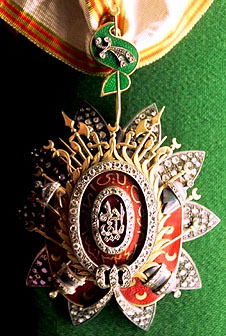
Order of the Crown of Tunisia - Established: 1956 by King Muhammad al-Amin
Order of Glory - Established: 1835 by Mustafa Pasha-Bey, in a single class following the creation of the Turkish decoration of the same name. Modified and extended by Ahmad Pasha-Bey in 1843 to include a superior class (San’f al-Akbar or Grand Cordon for those of the rank of Lieutenant-General and above) and four ordinary classes (1. San’f al-Awal or Grand Officer for those of the rank of Major-General, 2. San’f al-Tani or Commander for Colonels, 3. San’f al-Talet or Officer for Lieutenant-Colonels, 4. San’f al-Raba’a or Knight 1st class for captains), all classes encrusted with brilliants and precious stonesin extent and value corresponding to class. Extended by two further classes in 1847 (5. San’f al-Khamis or Knight 2nd class for junior officers, and 6. San’f al-Sadis or Knight 3rd class for other ranks). Reorganised by Muhammad as-Sadiq Pasha-Bey in February 1861, when he abolished the sixth class and replaced the elaborate bejewelled insignia with new designs in silver and coloured enamels. The order thereafter consisted of a superior class (San’f al-Akbar or Grand Cordon – bestowed on members of the Beylical family on reaching the age of 24 and or for exceptional service by those of the rank of Lieutenant-General or above) and four ordinary classes (1. San’f al-Awal or Grand Officer – limited to 60 ordinary recipients at any one time, 2. San’f al-Tani or Commander – 150 recipients, 3. San’f al-Talet or Officer – 366 recipients, 4. San’f al-Raba’a or Knight 1st class – 600 recipients, and 5. San’f al-Khamis or Knight 2nd class – 800 recipients). As an added mark of special honour all classes could be awarded as murassa or bejewelled. The original bejewelled insignia created in the 1861 re-organisation became the sovereign’s badge, worn only by the reigning Bey. The fifth class was discontinued in a further re-organization on 31st December 1865. During the French protectorate 1881-1956, the order came under the administration of the colonial orders organization and was bestowed by the President of the French Republic alongside the Bey of Tunis. The order was a general order of merit and although originally restricted to men, open to women from the reign of Muhammad al-Habib [Lahbib] Pasha. Obsolete 1957. Copyright
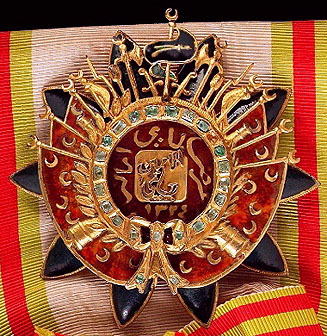
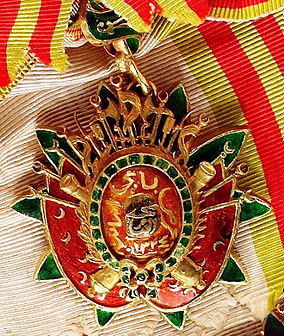
Order of Independence - Established: 6 September 1956 by King Muhammad al-Amin, to commemorate the attainment of independence from France and to recognise the services of those who struggled to achieve that ambition.
